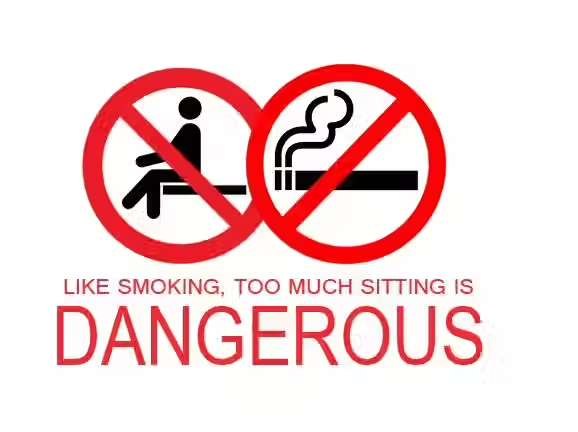Why Sitting Is the New Smoking — And What You Can Do About It
- Chelsea Young
- Jun 29
- 3 min read

In today’s modern world, sitting has become the default position. From long commutes to desk jobs to unwinding in front of a screen, most of us spend the majority of our day on our backsides. In fact,
the average adult in North America sits for around 9.3 hours per day — and that sedentary lifestyle comes with serious health consequences.
The Hidden Dangers of Sitting
Sitting for long periods isn’t just about posture — it affects nearly every system in the body. Here's what prolonged sitting actually does:
Reduces circulation: Limited blood flow impacts muscle function, slows metabolism, and can contribute to varicose veins.
Slows your metabolism: Calorie-burning takes a hit, making it easier to gain weight and harder to shed fat.
Deactivates muscles: Extended sitting causes muscles to "shut down" and connective tissues to stiffen, leading to poor mobility.
Clouds your mind: Cognitive performance may decline with chronic inactivity.
Can Exercise Cancel Out Sitting?
A common belief is that working out daily makes up for all the sitting — but it’s not that simple. One hour of exercise doesn't offset 8+ hours of being still. Think of it this way: just like a morning jog doesn’t undo the effects of smoking, a daily workout doesn’t erase the impact of a sedentary lifestyle.
Research is clear — sitting too much is harmful, even if you’re active.
What Can We Do Instead?
Experts have floated all kinds of solutions, from exercise balls to treadmill desks. Let’s take a closer look:

Sitting on an Exercise Ball
The idea is to keep core muscles activated. However, studies show little difference between sitting on a ball and a chair, with some added spinal compression and discomfort.
Standing Desks
Standing desks do help reduce sitting time and may improve posture and calorie burn. However, standing still isn’t the magic bullet either — prolonged standing can lead to joint strain and fatigue.
Treadmill or Walking Desks
Walking desks encourage movement, which is great — but they can hinder focus and cognitive performance for tasks that require concentration. Not ideal for all-day use or mentally intense work.
So What Does Help?
The solution isn’t just about what we sit (or stand) on — it’s about how often we move.
Task Awareness Is Key
No matter what your workstation looks like, being aware of your body and movement patterns is essential. Make it a point to:
Shift positions frequently.
Take mini breaks every hour.
Stand, stretch, or walk whenever you can.
Why It Matters: The Metabolic Impact
The effects of chronic sitting go far beyond sore backs. Sedentary lifestyles are strongly linked to:
Increased waist circumference
Higher BMI and obesity risk
Elevated insulin resistance
Lower levels of HDL (good) cholesterol
Some researchers argue that sitting should be classified as a heart disease risk factor, much like smoking.
Practical Tips for Moving More
The goal is to incorporate frequent, intentional movement throughout your day. Here are some easy ways to do it:
Take movement breaks: Stand, stretch, or walk for 5 minutes every hour.
Alternate between sitting and standing with a sit-stand desk.
Move with purpose: Walk while on calls, do desk stretches, or hold standing meetings.
Advocate for better workstations: Don’t be afraid to request ergonomic tools at work.

Final Thoughts: Movement Is Medicine
Whether you work at a desk, at home, or in a studio, remember this: Movement is vital for your body and your brain. It boosts focus, elevates mood, and reduces long-term health risks. Sitting might be unavoidable in some parts of life, but being intentional about movement can help you reclaim your health, one step (or stretch) at a time.





Comments